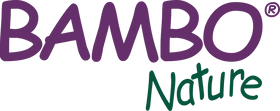Generally, children are ready to start potty training when they are aged from 18 months to 24 months. That said, some children are ready sooner, while others aren’t ready until after their 3rd birthday – and that’s perfectly normal! Potty training is not a race, the important thing is when your child is physically and mentally ready to start.
But, you might be sitting there wondering, “I think my baby is ready, but how do I know for sure if this is the right time?” Well, there are some signs you can look out for.
First, there are some basic physical developments that need to be in place before your child might be ready to potty train:
- Your child can stay dry for longer periods at a time. Ideally, you should be able to go 2-3 hours between diaper changes; if your child isn’t consistently dry for longer periods of time, going to the toilet constantly can become a nuisance, and your child could start to resent the potty.
- Your child has regular bowel movements. If your child is getting on a more regular schedule with their number two’s, it can be easier for you to start potty training. If your child always goes in the morning, try to incorporate potty-time in the morning routine.
- Your child can pull their pants (and/or diaper pants) up and down by themselves. It’s important that your child is actually able to go by themselves, once they learn to feel when they need to go. The patience and ability to undress and redress is important.
- Your child can get to and on the toilet by themselves. If you’re using a child-sized potty placed on the floor, this step should be easy. But if you’ve opted for a potty-training seat for your normal toilet, there are probably some steps going up to the toilet seat, and some coordination involved getting up and down.

Now, in addition to these physical signs and developments, there are other signs to look out for. These have more to do with your child’s own readiness for potty training:
- Taking an interest in the process. If your child starts to follow you or other family members to the bathroom and shows an interest in their use of the toilet, asks questions about the process etc., it’s a good sign that your little one is ready to try it themselves.
- Your child can understand and verbalize. Your child can understand what pee or poop means, can say and understand sentences like “I go poop” or “I have to pee”, and maybe even ask curious questions about it.
- Your child pulls at dirty diapers. If your child starts to exhibit discomfort or disgust with wet or dirty diapers, and wants to be changed immediately, this is a good sign to start potty training. Their own motivation to stay clean is important.
- Hiding to pee or poop. If your child starts to hide and seek privacy, when they have to go, it means that they have learned to feel that poop is on the way, and they have observed that adults do it in private, copying your behavior.

When it comes to the decision whether or not to actually start potty training, keep in mind that without both the physical and mental readiness, potty training can become a frustrating and unsuccessful process. The most important thing is not to rush potty training – if you want potty training to be a success, your child has to be ready for it.
If you do decide to go ahead with the potty training, go to our other blogpost for our best tips to succeed with potty training.

